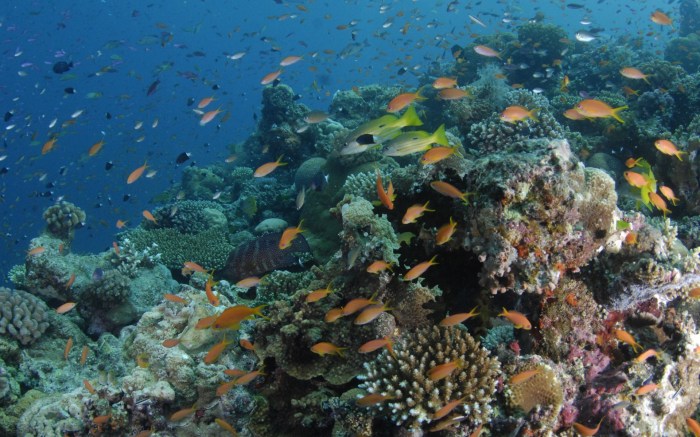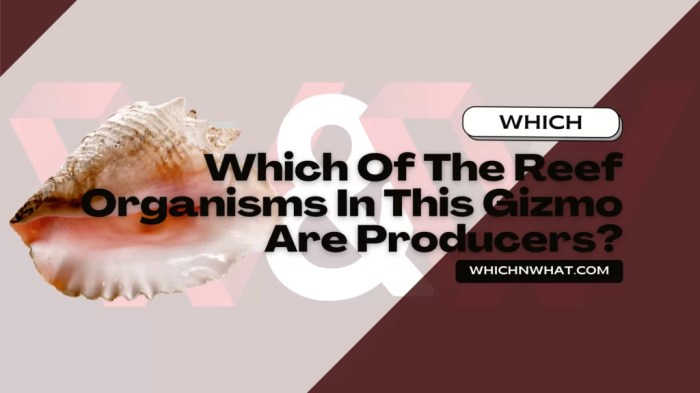Embark on an immersive journey with Gizmo Coral Reef 1 Answers, a comprehensive guide to understanding the intricate world of coral reef ecosystems and the pressing threats they face. Dive deep into the simulation’s components, unravel the importance of coral reefs in marine biodiversity, and uncover the alarming consequences of human activities on these vital underwater havens.
As we delve into the Gizmo Coral Reef simulation, we’ll uncover its strengths and weaknesses, providing valuable insights into its effectiveness as an educational tool. Join us in exploring the diverse organisms that inhabit coral reefs, their interconnected roles, and the urgent need for conservation efforts to protect these fragile ecosystems for generations to come.
Gizmo Coral Reef Overview
Gizmo Coral Reef is an interactive simulation that models a coral reef ecosystem. It allows students to explore the complex interactions between different organisms in the reef and the impact of human activities on the ecosystem.
The simulation is designed to be both educational and engaging. It provides students with a hands-on opportunity to learn about the different components of a coral reef ecosystem and how they interact. Students can also explore the effects of different human activities, such as pollution and overfishing, on the reef.
Components and Features
The Gizmo Coral Reef simulation includes a variety of components and features that allow students to explore the ecosystem in detail. These components include:
- A virtual reef that students can populate with different organisms.
- A variety of tools that students can use to manipulate the reef, such as adding nutrients or removing pollutants.
- A data collection tool that students can use to track the changes in the reef over time.
The Gizmo Coral Reef simulation is a valuable tool for teaching students about the importance of coral reefs and the threats they face. It is an engaging and interactive way for students to learn about the complex interactions between different organisms in the ecosystem and the impact of human activities on the reef.
Coral Reef Ecosystems

Coral reefs are vibrant underwater ecosystems teeming with an astonishing diversity of life. These complex habitats, formed by the accumulation of calcium carbonate skeletons secreted by tiny marine invertebrates called corals, provide essential shelter, food, and breeding grounds for a vast array of marine organisms.
Coral reefs play a pivotal role in maintaining the health and productivity of marine ecosystems. They act as natural breakwaters, protecting coastlines from erosion and storm surges. Moreover, they serve as vital nurseries for juvenile fish and invertebrates, ensuring the sustainability of fish populations and supporting the livelihoods of coastal communities.
Coral Reef Organisms
Coral reef ecosystems are home to a diverse array of organisms, each playing a crucial role in the functioning of the reef. The main groups of coral reef organisms include:
- Corals:The foundation of coral reefs, corals are marine invertebrates that secrete a hard calcium carbonate skeleton. They form colonies, creating intricate structures that provide shelter and habitat for other organisms.
- Fish:Coral reefs support a staggering variety of fish species, from tiny damselfish to large predators like sharks. Fish play essential roles in the reef ecosystem, consuming algae, controlling populations of other organisms, and providing food for larger predators.
- Invertebrates:A vast array of invertebrates, including mollusks, crustaceans, and echinoderms, thrive in coral reef ecosystems. These organisms contribute to the biodiversity and ecological balance of the reef.
- Algae:Algae, particularly coralline algae, play a crucial role in the formation and growth of coral reefs. They secrete calcium carbonate, contributing to the structural integrity of the reef.
Threats to Coral Reefs
Coral reefs, the vibrant and diverse ecosystems of the ocean, are facing numerous threats that jeopardize their survival. Human activities and natural phenomena contribute to the degradation of these vital marine habitats.
If you’re looking for answers to Gizmo Coral Reef 1, you might also be interested in Saxon Math Homeschool 7/6 . This comprehensive homeschool math curriculum provides a solid foundation in essential math concepts. Whether you’re a student or a teacher, Saxon Math can help you excel in your math studies.
After exploring Saxon Math, don’t forget to return to Gizmo Coral Reef 1 for more interactive learning about the fascinating underwater ecosystem.
Coral Bleaching, Gizmo coral reef 1 answers
Coral bleaching is a significant threat to coral reefs, caused by elevated water temperatures. When corals are exposed to abnormally warm water, they expel their symbiotic algae, losing their vibrant colors and becoming susceptible to disease and mortality.
Pollution
Pollution from various sources, including sewage, industrial effluents, and agricultural runoff, poses a significant threat to coral reefs. Excess nutrients from fertilizers and wastewater can lead to algal blooms, smothering corals and reducing sunlight penetration.
Overfishing
Overfishing disrupts the delicate balance of coral reef ecosystems. Removing herbivorous fish, such as parrotfish, can lead to an overgrowth of algae, which can smother corals. Additionally, fishing practices like dynamite fishing and cyanide fishing can directly damage and destroy coral colonies.
Climate Change
Climate change poses a long-term threat to coral reefs. Rising sea temperatures contribute to coral bleaching, while ocean acidification weakens coral skeletons, making them more susceptible to erosion.
Conservation and Restoration

Coral reefs are incredibly valuable ecosystems that provide numerous benefits to humans and marine life alike. Their conservation is crucial for the health of our planet and the well-being of future generations.Various methods are employed to restore damaged coral reefs, including coral transplantation, artificial reef creation, and reducing human impact.
Marine protected areas play a vital role in safeguarding coral reefs by limiting human activities that can harm these delicate ecosystems.
Coral Transplantation
Coral transplantation involves transplanting healthy coral fragments from one area to a damaged reef. This technique helps to repopulate depleted areas and accelerate the recovery process.
Artificial Reef Creation
Artificial reefs are structures designed to mimic natural reefs and provide a habitat for marine life. They can be created using various materials, such as concrete, limestone, or recycled materials, and are often placed in areas where natural reefs have been damaged or destroyed.
Reducing Human Impact
Reducing human activities that damage coral reefs is essential for their conservation. This includes limiting overfishing, reducing pollution, and promoting sustainable tourism practices.
Marine Protected Areas
Marine protected areas (MPAs) are designated areas of the ocean where human activities are restricted or prohibited to protect marine ecosystems. MPAs can help to reduce overfishing, pollution, and other threats to coral reefs, providing them with a safe haven to recover and thrive.
Gizmo Simulation Analysis: Gizmo Coral Reef 1 Answers

The Gizmo Coral Reef simulation is an effective tool for teaching about coral reef ecosystems. It provides a realistic and interactive environment for students to explore the complex relationships between different organisms in a coral reef community.
One of the strengths of the simulation is its ability to model the effects of different environmental factors on coral reefs. Students can manipulate variables such as water temperature, pH, and nutrient levels to see how they affect the growth and survival of corals and other reef organisms.
Weaknesses
However, the simulation also has some weaknesses. One weakness is that it does not include all of the factors that can affect coral reefs in the real world. For example, the simulation does not include the effects of overfishing or pollution.
Improvements
Another weakness is that the simulation is not very user-friendly. The interface is cluttered and difficult to navigate, and the instructions are not always clear.
Some improvements that could be made to the simulation include:
- Adding more environmental factors to the simulation, such as overfishing and pollution.
- Making the interface more user-friendly and the instructions more clear.
- Providing more guidance to students on how to use the simulation.
FAQ Summary
What is the Gizmo Coral Reef simulation?
Gizmo Coral Reef is a virtual simulation that allows users to explore and investigate the dynamics of coral reef ecosystems, including the interactions between different organisms and the effects of environmental factors.
What are the major threats to coral reefs?
Coral reefs face numerous threats, including coral bleaching caused by rising sea temperatures, pollution, overfishing, and the impacts of climate change, such as ocean acidification.
What is the importance of coral reef conservation?
Coral reefs provide critical habitats for a vast array of marine life, support coastal communities, and play a role in regulating the global climate. Their conservation is essential for maintaining the health and biodiversity of our oceans.